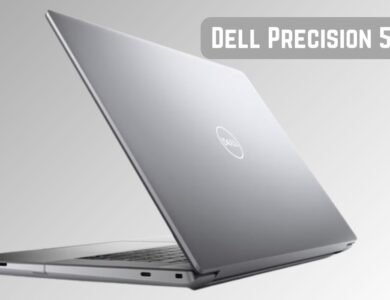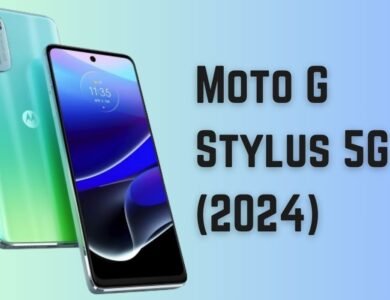Best Home Projectors of 2024 for ultimate entertainment
Discover the top home projectors of 2024 for ultimate entertainment. Expert reviews and buying guide for the best cinematic experience at home.

Home projectors have emerged as a compelling alternative to traditional televisions, captivating the interest of home entertainment enthusiasts. These devices project images onto a screen or wall, transforming any room into a personal cinema. The surge in their popularity is largely driven by their ability to deliver significantly larger screen sizes, combined with remarkable portability and versatility.
One of the primary advantages of home projectors over conventional TVs is the expansive screen size they offer. While traditional TVs are constrained by their physical dimensions, projectors can easily display images that span several feet, providing an immersive viewing experience akin to a theater. This makes them ideal for movie nights, sports events, and even gaming sessions.
Portability is another key benefit. Unlike bulky TVs, projectors are lightweight and compact, allowing users to move them effortlessly from one room to another or even take them on outdoor adventures. This flexibility means you can enjoy your favorite content anywhere, whether it’s in your living room, backyard, or on a camping trip.
Versatility is also a hallmark of home projectors. They are compatible with various input sources such as streaming devices, gaming consoles, and laptops, making them suitable for a wide range of applications beyond just watching movies. Whether you need a projector for presentations, educational purposes, or simply binge-watching your favorite series, there’s a model to meet your needs.
Different types of projectors cater to diverse preferences and requirements. Digital Light Processing (DLP) projectors are known for their sharp images and high contrast. Liquid Crystal Display (LCD) projectors offer vibrant colors and are typically more affordable. Light-Emitting Diode (LED) projectors boast long lamp life and energy efficiency, while Liquid Crystal on Silicon (LCoS) projectors combine the strengths of LCD and DLP technologies to deliver superior image quality.
Choosing the right projector is crucial for maximizing your home viewing experience. By understanding the unique benefits and features of each type, you can make an informed decision that aligns with your entertainment needs and preferences. As we delve deeper into the world of home projectors, you’ll discover the myriad options available and how to select the perfect one for your space.
Home Projectors Key Features to Consider
When selecting a projector for home use, it’s essential to understand the key features that will significantly impact your viewing experience. Here are some crucial specifications to consider:
- Resolution: The clarity of the image is determined by the projector’s resolution. Common resolutions include 1080p (Full HD) and 4K (Ultra HD). A higher resolution ensures sharper and more detailed visuals. Opt for 4K if you desire a cinema-like experience, especially for larger screens.
- Brightness: Measured in lumens, brightness dictates the projector’s ability to display clear images in various lighting conditions. For home use, a projector with at least 2,000 lumens is recommended for dim rooms, while 3,000 lumens or more is ideal for rooms with ambient light.
- Contrast Ratio: This ratio measures the difference between the darkest and brightest parts of an image. A higher contrast ratio results in deeper blacks and more vibrant colors, enhancing the overall image quality. Look for a projector with a contrast ratio of at least 10,000:1.
- Throw Distance: The throw distance is the space between the projector and the screen. Short-throw projectors can display large images from a short distance, making them suitable for small rooms. Long-throw projectors, on the other hand, require more space but can produce larger images.
- Connectivity Options: Modern projectors offer various connectivity options such as HDMI, Bluetooth, and Wi-Fi. Ensure the projector has multiple HDMI ports for connecting devices like Blu-ray players, gaming consoles, and streaming devices. Bluetooth and Wi-Fi enable wireless streaming and connectivity with smart devices.
Each of these features plays a pivotal role in determining the quality and convenience of your home projector. Balancing these specifications based on your specific needs and room setting will help you find the perfect projector, ensuring an optimal viewing experience.
Top Home Projectors of 2023
As technology advances, home projectors have become an essential part of creating an immersive home theater experience. Below is a curated list of the best home projectors available in 2023, catering to various budgets and preferences. Each projector is briefly reviewed, highlighting its key features, pros and cons, and what makes it stand out in the market.
Epson Home Cinema 5050UB
Key Features:
- Resolution: 4K PRO-UHD
- Brightness: 2,600 lumens
- Connectivity: HDMI, USB, Ethernet
- Special Features: HDR10, motorized lens shift, 3LCD technology
Pros:
- Exceptional picture quality
- High brightness for well-lit rooms
- Extensive connectivity options
Cons:
- Relatively high price point
- Bulky design
The Epson Home Cinema 5050UB is one of the best home projectors of 2023, offering stunning 4K resolution and high brightness, making it ideal for both dark and well-lit rooms. Its HDR10 support and advanced 3LCD technology ensure vibrant colors and sharp images.
BenQ HT3550
Key Features:
- Resolution: 4K UHD
- Brightness: 2,000 lumens
- Connectivity: HDMI, USB
- Special Features: HDR-PRO, DCI-P3 color, 10-element lens array
Pros:
- Excellent color accuracy
- Compact design
- Affordable 4K option
Cons:
- Lower brightness compared to competitors
- Limited lens shift
The BenQ HT3550 stands out for its exceptional color accuracy and affordability, making it one of the top-rated projectors for those seeking high-quality 4K visuals on a budget. Its compact design is also a bonus for smaller spaces.
Anker Nebula Capsule II
Key Features:
- Resolution: 720p HD
- Brightness: 200 lumens
- Connectivity: HDMI, USB, Wi-Fi, Bluetooth
- Special Features: Android TV, 360° speaker, portable design
Pros:
- Highly portable
- Smart capabilities with Android TV
- Built-in 360° speaker
Cons:
- Lower resolution and brightness
- Limited to smaller screen sizes
For those prioritizing portability and smart features, the Anker Nebula Capsule II is a top contender among the best home projectors 2023. Its compact size, combined with Android TV and built-in 360° speaker, makes it perfect for on-the-go entertainment.
Optoma UHD50X
Key Features:
- Resolution: 4K UHD
- Brightness: 3,400 lumens
- Connectivity: HDMI, USB, VGA, Audio Out
- Special Features: 240Hz refresh rate, HDR10, Dynamic Black technology
Pros:
- High brightness for any lighting conditions
- Fluid motion with 240Hz refresh rate
- Great value for money
Cons:
- Fan noise can be noticeable
- Bulky size
The Optoma UHD50X is a standout for its high brightness and impressive 240Hz refresh rate, making it ideal for both movies and gaming. Offering great value for money, it is one of the top home projectors for 2023 for those seeking a versatile and high-performance option.
- Best (and Free) AI Tools In 2024
- How to choose a drawing tablet for graphic design
- Link Building for SEO: A Guide to the Basics
Tips for Setting Up Your Home Projector
Setting up a home projector requires careful planning to ensure the best viewing experience. The room conditions play a crucial role in the projector’s performance. Ideally, the room should be as dark as possible to enhance image clarity and color contrast. Blackout curtains can be a valuable addition, especially in rooms with large windows. Additionally, the surface onto which you project the image significantly impacts the quality. While specialized projector screens are the best option, a smooth, white wall can also suffice in a pinch.
Mounting or placing your projector correctly is essential for achieving optimal image quality. Begin by determining the throw distance, which is the distance between the projector and the screen. This distance varies based on the projector model, so refer to the manufacturer’s guidelines. Position the projector at a height that aligns with the center of the screen to avoid keystone distortion, where the image appears trapezoidal instead of rectangular. Adjustable mounting brackets can aid in achieving the correct angle and height.
Enhancing your setup with the right accessories can significantly improve your viewing experience. A high-quality projector screen provides a superior surface compared to a regular wall, ensuring better color reproduction and sharpness. A robust sound system can complement the visual experience, as built-in projector speakers often lack the necessary power for a home theater environment. Investing in a universal remote can also streamline your control over multiple devices, adding convenience to your setup.
Troubleshooting common issues can save time and enhance the longevity of your projector. Image distortion may occur due to incorrect placement or angle, which can be corrected by adjusting the settings or repositioning the projector. Connectivity problems often arise from incompatible cables or outdated software; ensuring all firmware and drivers are up to date can resolve these issues. Regular maintenance, such as cleaning the projector lens and air filters, is vital for prolonging the lifespan of your device, ensuring it continues to deliver high-quality performance.



